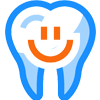Cleanings & Procedure in Bellflower, CA
Brushing and flossing are essential for maintaining oral health, but they are not always enough to achieve optimal results. Certain areas of the mouth, such as pits, grooves, and interdental spaces, are difficult to clean with a toothbrush and floss alone. Over time, plaque accumulates in these areas and hardens into tartar, which can harbor bacteria and lead to gum infections. If left untreated, this can result in gum recession and eventual tooth loss.
Professional dental cleaning is a vital preventive measure designed to remove plaque and tartar buildup from the teeth and gums. It should be performed at least twice a year to maintain optimal oral health.
Steps Involved in Professional Dental Cleaning
Thorough Physical Examination
The dental cleaning process begins with a comprehensive examination of the oral cavity. This diagnostic step includes:
- Reviewing and updating medical history to assess overall health conditions. Patients with heart disease, diabetes, or pregnancy may require special considerations.
- Taking X-rays to detect decay, fractures, or infections.
- Conducting an oral cancer screening.
- Assessing bite alignment for orthodontic health.
- Referringto a specialist if any complications are identified.
Plaque and Tartar Removal
Once the evaluation is complete, the dentist or hygienist uses a small mirror to locate areas with plaque and tartar buildup. A specialized scaling tool is then used to gently scrape away these deposits from the tooth surfaces and around the gum line. Tartar is hardened plaque that cannot be removed with regular brushing and flossing, making professional cleaning essential.
Gritty Toothpaste Cleaning
After tartar removal, a high-powered electric brush and gritty toothpaste are used to scrub the teeth. This step helps eliminate any remaining plaque and polishes the enamel, leaving the teeth smooth and clean.
Expert Flossing
Professional flossing reaches deep between the teeth and removes any hidden plaque or debris that may have been missed during regular home flossing. This ensures that the teeth and interdental areas are thoroughly cleaned.
Rinsing
The patient is asked to rinse their mouth to remove any leftover debris from the cleaning process. A fluoride-based or antibacterial mouthwash may be used for additional protection.
Fluoride Treatment
A fluoride gel or varnish is applied to the teeth and left to dry. Fluoride helps remineralize and strengthen enamel, making it more resistant to cavities and bacterial attacks.
Dental Sealants (If Needed)
To further protect teeth, especially molars and premolars, a thin plastic-like coating called a dental sealant may be applied. This shields deep grooves and pits from plaque accumulation and helps prevent decay.
Post-Cleaning Counseling
In the final step, the dentist or hygienist provides personalized guidance on:
- Proper brushing and flossing techniques.
- Dietary recommendations for better oral health.
- Tobacco cessation and its benefits for oral and overall health.
Conclusion
Professional dental cleaning is an essential part of maintaining a healthy smile. While daily brushing and flossing help keep plaque at bay, professional cleanings ensure the complete removal of tartar and bacteria from hard-to-reach areas. Regular cleanings not only improve oral health but also contribute to overall well-being by reducing the risk of gum disease, cavities, and systemic health issues.
At Samir T. Ayoub Dental Corporation, we are committed to providing top-quality dental care to help you achieve and maintain a beautiful, healthy smile. Prioritize your oral health—schedule your professional dental cleaning today!
At Samir T. Ayoub Dental Corporation, we employ the practices of modern dentistry to systematically repair damage and enhance the appearance of your smile. We design a custom plan for each patient to meet their individual requirements. For further doubts and queries, book an appointment with us or visit our office today.
Visit Our Office
Office Hours
- Monday7:00 am - 3:00 pm
- Tuesday8:00 am - 1:00 pm, 2:00 pm - 6:00 pm
- Wednesday8:00 am - 1:00 pm, 2:00 pm - 6:00 pm
- Thursday9:00 am - 5:00 pm
- Friday7:00 am - 12:00 pm
- Saturday7:00 am - 1:00 pm
- SundayClosed
